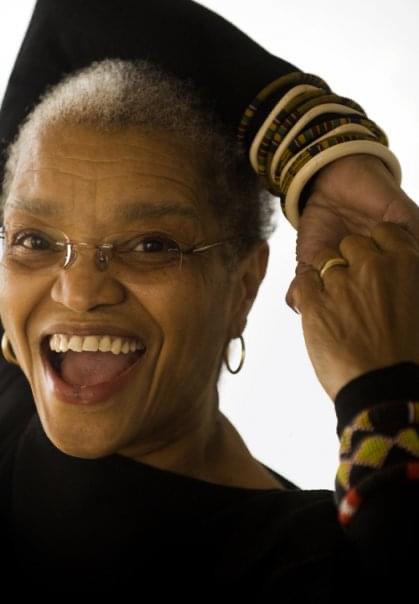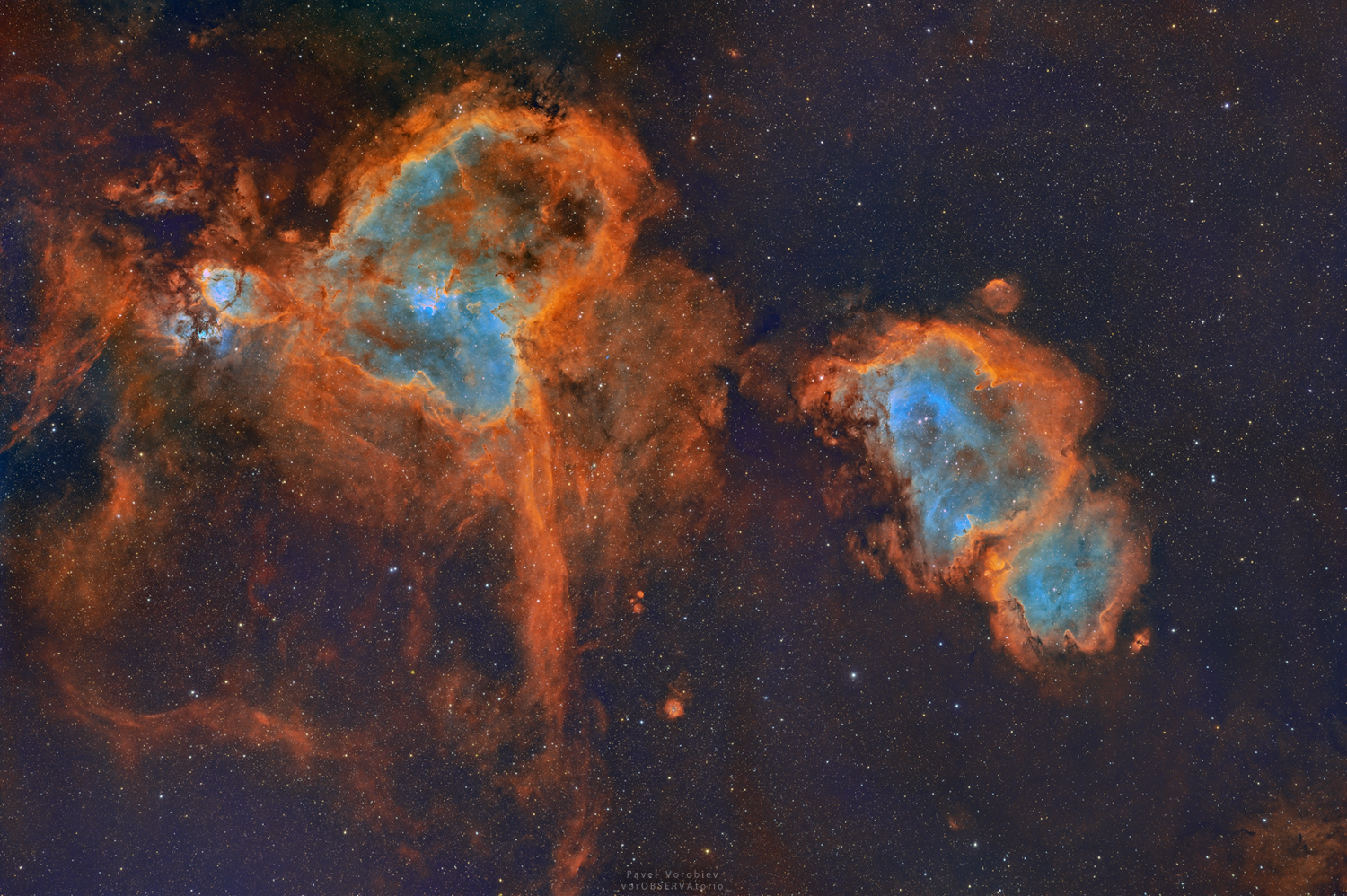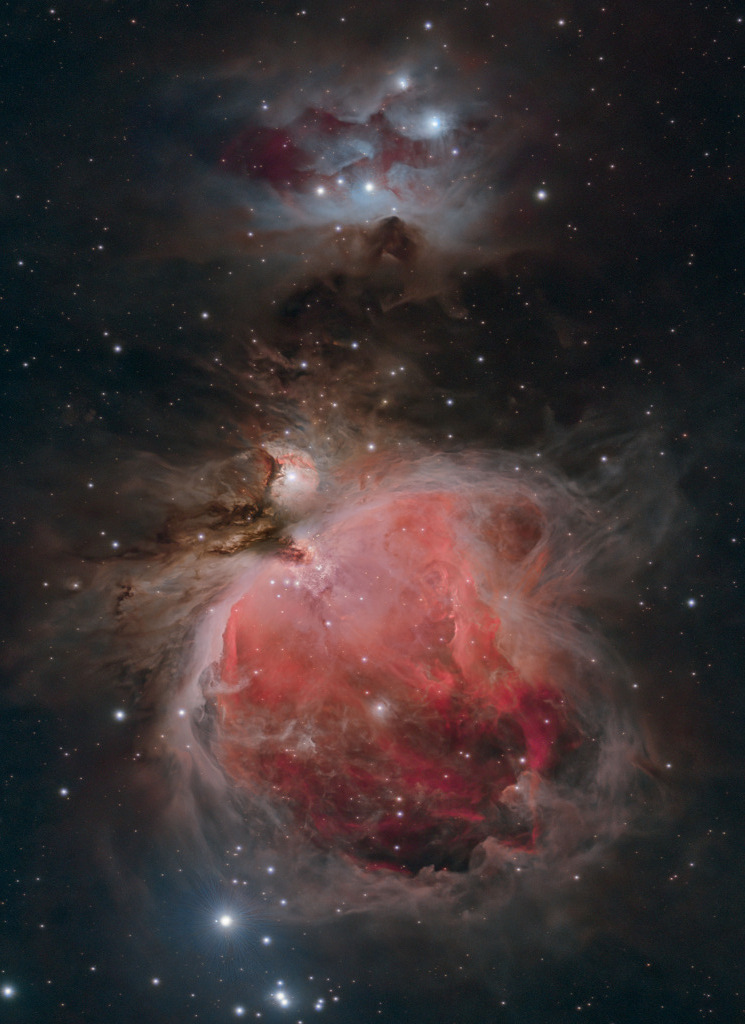Blog
Wardell Joseph Quezergue March 12, 1930 – September 6, 2011) was an American composer, arranger, record producer and bandleader, known among New Orleans musicians as the “Creole Beethoven”. Steeped in jazz, he was an influential musician whose work shaped the sound of New Orleans rhythm and blues, funk and pop music. His role as an arranger and producer kept him out of the spotlight and enabled him to enhance the careers of many. He was a staple of the New Orleans music scene and the recipient of an honorary doctorate in music.
Quezergue was born in the Seventh Ward of New Orleans into a musical family of creole descent. His father Sidney Quezergue Sr. played guitar and his mother Violetta Guimont played clarinet. His older brothers, Sidney Jr. and Leo, were jazz musicians. Sidney played the trumpet and Leo played the drums. The family played together on Sundays. Quezergue had no formal music training. He was influenced by Louis Armstrong, Harry James and Dizzy Gillespie. As a teenager he played the trumpet professionally and started to compose.
https://www.youtube.com/watch?v=48ymr_iFvHw
more...Don Drummond (12 March 1932 – 6 May 1969) was a Jamaican ska trombonist and composer. He was one of the original members of The Skatalites, and composed many of their tunes. In 1966, Drummond was convicted of murdering his 23-year-old lover, Anita “Marguerita” Mahfood.
Drummond was born at the Jubilee Hospital in Kingston, Jamaica, to Doris Monroe and Uriah Drummond.He was educated at Kingston’s Alpha Boys School, where he later taught his younger schoolmate Rico Rodriguez to play the trombone.
His musical career began in 1950 with the Eric Dean’s All-Stars where he performed jazz. He continued into the 1960s with others, including Kenny Williams
After performing jazz for a decade, Drummond began performing ska and in 1964 he joined The Skatalites. With Drummond’s politicized conversion to the Rastafari movement, other band members followed his lead.He became a household name in Jamaica, before suffering mental health problems. It has been said that pianist George Shearing rated him as being among the world’s top five trombone players.
more...https://www.youtube.com/watch?v=0LRlmCko58o
more...Beverly Cottman Memorial
Just learned about Beverly Cottmans passing today while she was touring Egypt. A wonderful educator, theater and literary artist, Beverly was a sight to behold offering the world a brilliant vision of unity and collective cultural awakening. She was always an inspiration. I first met her while I was working with Jamaican choreographer Paulette Cousins and the Jamaican Dance Company. And she and her husband Bill would frequent my performances with Ancestor Energy over the years. I also remember Beverly & Bill wildly dancing to the Maroons on many occasions! Always empowering the artists with confidence and an overwhelming joy. Have a great new adventure Beverly!


In the constellation Cassiopeia. Located about 6,000 light-years from Earth, the Heart and Soul nebulae form a vast star-forming complex that makes up part of the Perseus spiral arm of our Milky Way galaxy. The nebula to the right is the Heart, designated IC 1805 and named after its resemblance to a human heart. To the left is the Soul nebula, also known as the Embryo nebula, IC 1848 or W5. The Perseus arm lies further from the center of the Milky Way than the arm that contains our sun. The Heart and Soul nebulae stretch out nearly 580 light-years across, covering a small portion of the diameter of the Milky Way, which is roughly 100,000 light-years across.
The two nebulae are both massive star-making factories, marked by giant bubbles that were blown into surrounding dust by radiation and winds from the stars. WISE’s infrared vision allows it to see into the cooler and dustier crevices of clouds like these, where gas and dust are just beginning to collect into new stars. These stars are less than a few million of years old — youngsters in comparison to stars like the sun, which is nearly 5 billion years old.
Also visible near the bottom of this image are two galaxies, Maffei 1 and Maffei 2. Both galaxies contain billions of stars and, at about 10 million light-years away, are well outside our Milky Way yet relatively close compared to most galaxies. Maffei 1 is the bluish elliptical object and Maffei 2 is the spiral galaxy.
All four infrared detectors aboard WISE were used to make this image. Color is representational: blue and cyan represent infrared light at wavelengths of 3.4 and 4.6 microns, which is dominated by light from stars. Green and red represent light at 12 and 22 microns, which is mostly light from warm dust.

Robert Keith McFerrin Jr. (born March 11, 1950) is an American folk and jazz singer. He is known for his vocal techniques, such as singing fluidly but with quick and considerable jumps in pitch—for example, sustaining a melody while also rapidly alternating with arpeggios and harmonies—as well as scat singing, polyphonic overtone singing, and improvisational vocal percussion. He is widely known for performing and recording regularly as an unaccompanied solo vocal artist. He has frequently collaborated with other artists from both the jazz and classical scenes.
McFerrin’s song “Don’t Worry, Be Happy” was a No. 1 U.S. pop hit in 1988 and won Song of the Year and Record of the Year honors at the 1989 Grammy Awards. McFerrin has also worked in collaboration with instrumentalists, including the pianists Chick Corea, Herbie Hancock, and Joe Zawinul, the drummer Tony Williams, and the cellist Yo-Yo Ma.
McFerrin was born in Manhattan, New York City in 1950, the son of operatic baritone Robert McFerrin and singer Sara Copper. He attended Cathedral High School in Los Angeles, Cerritos College, University of Illinois Springfield (then known as Sangamon State University) and California State University, Sacramento.
His mother Sara (Copper) McFerrin was a soloist and taught voice at Fullerton College in Southern California. McFerrin’s first recorded work, the self-titled album Bobby McFerrin, was not produced until 1982, when McFerrin was already 31 years old. Before that, he had spent six years developing his musical style, the first two years of which he attempted not to listen to other singers at all, in order to avoid sounding like them. He was influenced by Keith Jarrett, who had achieved great success with a series of solo improvised piano concerts including The Köln Concert of 1975, and wanted to attempt something similar vocally.
more...Astor Pantaleón Piazzolla March 11, 1921 – July 4, 1992) was an Argentine tango composer, bandoneon player, and arranger. His works revolutionized the traditional tango into a new style termed nuevo tango, incorporating elements from jazz and classical music. A virtuoso bandoneonist, he regularly performed his own compositions with a variety of ensembles. In 1992, American music critic Stephen Holden described Piazzolla as “the world’s foremost composer of Tango music”.
Piazzolla was born in Mar del Plata, Argentina, in 1921, the only child of Italian immigrant parents, Vicente “Nonino” Piazzolla and Assunta Manetti. His paternal grandfather, a sailor and fisherman named Pantaleo (later Pantaleón) Piazzolla, had immigrated to Mar del Plata from Trani, a seaport in the southeastern Italian region of Apulia, at the end of the 19th century. His mother was the daughter of two Italian immigrants from Lucca in the central region of Tuscany.
In 1925 Astor Piazzolla moved with his family to Greenwich Village in New York City, which in those days was a violent neighbourhood inhabited by a volatile mixture of gangsters and hard-working immigrants. His parents worked long hours and Piazzolla soon learned to take care of himself on the streets despite having a limp. At home he would listen to his father’s records of the tango orchestras of Carlos Gardel and Julio de Caro, and was exposed to jazz and classical music, including Bach, from an early age. He began to play the bandoneon after his father spotted one in a New York pawn shop in 1929.
more...Alex or Aleck Miller (originally Ford, possibly December 5, 1912 – May 24, 1965), known later in his career as Sonny Boy Williamson, was an American blues harmonica player, singer and songwriter. He was an early and influential blues harp stylist who recorded successfully in the 1950s and 1960s. Miller used various names, including Rice Miller and Little Boy Blue, before calling himself Sonny Boy Williamson, which was also the name of a popular Chicago blues singer and harmonica player. To distinguish the two, Miller has been referred to as Sonny Boy Williamson II.
He first recorded with Elmore James on “Dust My Broom“. Some of his popular songs include “Don’t Start Me Talkin’“, “Help Me“, “Checkin’ Up on My Baby“, and “Bring It On Home“. He toured Europe with the American Folk Blues Festival and recorded with English rock musicians, including the Yardbirds and Animals. “Help Me” became a blues standard, and many blues and rock artists have recorded his songs.
Miller’s date and place of birth are disputed. There are various opinions about his year of birth, five of which are 1897, 1899, 1907, 1909, and 1912. According to David Evans, professor of music and an ethnomusicologist at the University of Memphis, census records indicate that Miller was born in about 1912, being seven years old on February 2, 1920, the day of the census. Miller’s gravestone at Tutwiler, Mississippi, set up by record company owner Lillian McMurry twelve years after his death, gives his date of birth as March 11, 1908. In a spoken word performance called “The Story of Sonny Boy Williamson” that was later included in several compilations, Miller states that he was born in Glendora, Mississippi in 1897. According to researchers Bob Eagle and Eric S. LeBlanc, he was born in the small community of Money, near Greenwood, Mississippi, in 1912.\
more...The Great Nebula in Orion. Visible as a faint celestial smudge to the naked-eye, the nearest large star-forming region sprawls across this sharp telescopic image, recorded on a cold January night in dark skies from West Virginia, planet Earth. Also known as M42, the Orion Nebula’s glowing gas surrounds hot, young stars. About 40 light-years across, it lies at the edge of an immense interstellar molecular cloud only 1,500 light-years away within the same spiral arm of our Milky Way galaxy as the Sun. Along with dusty bluish reflection nebula NGC 1977 and friends near the top of the frame, the eye-catching nebulae represent only a small fraction of our galactic neighborhood’s wealth of star-forming material. Within the well-studied stellar nursery, astronomers have also identified what appear to be numerousinfant solar systems.

Norman Blake (born March 10, 1938) is a traditional American stringed instrument artist and songwriter. He is half of the eponymous Norman & Nancy Blake band with his wife, Nancy Blake.
Blake was born in Chattanooga, Tennessee, and grew up in Sulphur Springs, Alabama. He listened to old-time and country music on the radio by the Carter Family, the Skillet Lickers, Roy Acuff, and the Monroe Brothers (Charlie and Bill Monroe). He learned guitar at age 11 or 12, then mandolin, dobro, and fiddle in his teens. When he was 16, he dropped out of school to play music professionally.
In the 1950s, Blake joined the Dixieland Drifters and performed on radio broadcasts, then joined the Lonesome Travelers. When he was drafted in 1961, he served as an Army radio operator in the Panama Canal Zone. He started a popular band known as the Kobbe Mountaineers. A year later, while he was on leave, he recorded the album Twelve Shades of Bluegrass with the Lonesome Travelers.
more...Leon Bismark “Bix” Beiderbecke (March 10, 1903 – August 6, 1931) was an American jazz cornetist, pianist and composer.
Beiderbecke was one of the most influential jazz soloists of the 1920s, a cornet player noted for an inventive lyrical approach and purity of tone, with such clarity of sound that one contemporary famously described it like “shooting bullets at a bell”. His solos on seminal recordings such as “Singin’ the Blues” and “I’m Coming, Virginia” (both 1927) demonstrate a gift for extended improvisation that heralded the jazz ballad style, in which jazz solos are an integral part of the composition. Moreover, his use of extended chords and an ability to improvise freely along harmonic as well as melodic lines are echoed in post-WWII developments in jazz. “In a Mist” (1927) is the best known of Beiderbecke’s published piano compositions and the only one that he recorded. His piano style reflects both jazz and classical (mainly impressionist) influences. All five of his piano compositions were published by Robbins Music during his lifetime.
A native of Davenport, Iowa, Beiderbecke taught himself to play the cornet largely by ear, leading him to adopt a non-standard fingering technique that informed his unique style. He first recorded with Midwestern jazz ensemble The Wolverines in 1924, after which he played briefly for the Detroit-based Jean GoldketteOrchestra before joining Frankie “Tram” Trumbauer for an extended engagement at the Arcadia Ballroom in St. Louis, also under the auspices of Goldkette’s organisation. Beiderbecke and Trumbauer joined Goldkette’s main band at the Graystone Ballroom in Detroit in 1926. The band toured widely and famously played a set opposite Fletcher Henderson at the Roseland Ballroom in New York City in October 1926. He made his greatest recordings in 1927. The Goldkette band folded in September 1927 and, after briefly joining bass saxophone player Adrian Rollini‘s band in New York, Trumbauer and Beiderbecke joined America’s most popular dance band: Paul Whiteman and his Orchestra.
Beiderbecke’s most influential recordings date from his time with Goldkette and Whiteman, although he also recorded under his own name and that of Trumbauer’s. The Whiteman period marked a precipitous decline in his health due to his increasing use of alcohol. Treatment for alcoholism in rehabilitation centers, with the support of Whiteman and the Beiderbecke family, failed to stop his decline. He left the Whiteman band in 1929 and in the summer of 1931 died aged 28 in his Sunnyside, Queens, New York apartment.[A]
His death, in turn, gave rise to one of the original legends of jazz. In magazine articles, musicians’ memoirs, novels, and Hollywood films,[F] Beiderbecke has been envisaged as a Romantic hero, the “Young Man with a Horn” (a novel, later made into a movie starring Kirk Douglas, Lauren Bacall, Doris Day, and his friend Hoagy Carmichael). His life has often been portrayed as that of a jazz musician who had to compromise his art for the sake of commercialism. Beiderbecke remains the subject of scholarly controversy regarding his full name, the cause of his death and the importance of his contributions to jazz.
He composed or played on recordings that are jazz classics and standards such as “Davenport Blues“, “In a Mist“, “Copenhagen“, “Riverboat Shuffle“, “Singin’ the Blues“, and “Georgia on My Mind“.
more...
Siguiriyas is one of flamenco’s most exciting and difficult dance forms, and a dancer’s first job is to master the compás.
Mastering this dance also requires an understanding of how the letras are performed. Most singers stretch the compás of a single letra or all letras, and many singers change tempos, speeding up and slowing down throughout a letra for dramatic effect.
Throughout it’s performance history, theatrical dancers have often used props in siguiriyas, including mantons and castanets.
The structure for a danced siguiriyas usually includes the following sections:
-
Guitar falseta,followed by the singer’s salida/temple.
-
Entrada: A dancer can enter slowly and lyrically to a guitar falseta, or may choose to enter with driving footwork, culminating with a sharp, dramatic remate and/or llamada to cue the singer. Dancers often combine these two elements.
-
The letra, which includes dramatic remates interspersed throughout the verse. Similar to the Tarantos in character, the dancer pays strict attention to the singer’s letra, which dictates the mood, tempo and choreographic content. Given the somber lyrics and dramatic music for siguiriyas letras, dancer’s will match this mood with extravagant gestures, turns, footwork, and facial expressions.
-
1st escobilla often performed to a rhythmic falseta.
-
2nd letra which is similar to the 1st letra.
-
A danced falseta, performed rhythmically or arhythmically (this could also be included after the 1st letra).
-
Final escobilla The tempo will increase here, and the dancer can either perform a salida, exiting the stage with dramatic gestures and/or footwork, or transition to Bulerías or Tangos, changing the compás and mood to finish the dance.
The irregular spiral galaxy NGC 5486 hangs against a background of dim, distant galaxies in this image from the NASA/ESA Hubble Space Telescope. The tenuous disc of the galaxy is threaded through with pink wisps of star formation, which stand out from the diffuse glow of the galaxy’s bright core. While this particular galaxy has indistinct, meandering spiral arms it lies close to the much larger Pinwheel Galaxy, one of the best known examples of ‘grand design’ spiral galaxies with prominent and well-defined spiral arms. In 2006 Hubble captured an image of the Pinwheel Galaxy which was — at the time — the largest and most detailed photo of a spiral galaxy ever taken with Hubble. NGC 5486 lies 110 million light-years from Earth in the constellation Ursa Major. Constellations are not only patterns of bright stars, but also a system that astronomers use to divide the sky into regions. There are 88 of these regions, and each has an associated constellation depicting a mythological figure, an animal, or even an item of scientific equipment. This strange celestial menagerie contains everything from Ursa Major’s great bear to a toucan, a sea monster, a telescope, and even a painter’s easel! This observation comes from a selection of Hubble images exploring the detritus left behind by Type II supernovae. As massive stars reach the end of their lives they cast off huge amounts of gas and dust before ending their lives in titanic supernova explosions. NGC 5486 hosted a supernova in 2004, and astronomers used the keen vision of Hubble’s Advanced Camera for Surveys to explore the aftermath in the hopes of learning more about these explosive events. [Image description: A spiral galaxy. It is irregularly-shaped and its spiral arms are difficult to distinguish. The edges are faint and the core has a pale glow. It is dotted with small, wispy, pink regions where stars are forming. A few stars and small galaxies in warm colours are visible around it.] Link Hubble spies.

Ustad Zakir Hussain (born 9 March 1951) is an Indian tabla player, composer, percussionist, music producer and film actor. He is the eldest son of tabla player Alla Rakha.
He was awarded the Padma Shri in 1988, the Padma Bhushan in 2002, and the Padma Vibhushan in 2023, by the Government of India. He was also awarded the Govt of India’s Sangeet Natak Akademi Award in 1990, Fellowship of the Sangeet Natak Akademi Fellowship, Ratna Sadsya in 2018. In 1999, he was awarded the United States National Endowment for the Arts‘ National Heritage Fellowship, the highest award given to traditional artists and musicians.
Hussain attended St. Michael’s High School in Mahim, and was graduated from the St. Xavier’s College, Mumbai.
more...More Posts
- World Music with Kunta Kinte
- Daily Roots with The Techniques
- The Cosmos with NGC 7814
- Lee Ritenour Day
- Cal Massey Day
- Slim Harpo Day
- World Music with Israel Fernández
- Daily Roots with King Kong
- The Cosmos with the Vela Supernova Remnant
- Rod Stewart Day
- Mike Stern Day
- Max Roach Day
- World Music with Juluka
- Daily Roots with Ken Boothe
- The Cosmos with NGC 5584
- Joan Baez Day
- Bucky Pizzarelli Day
- Kenny Clarke Day
- World Music with Katalena
- Daily Roots with the Classics

